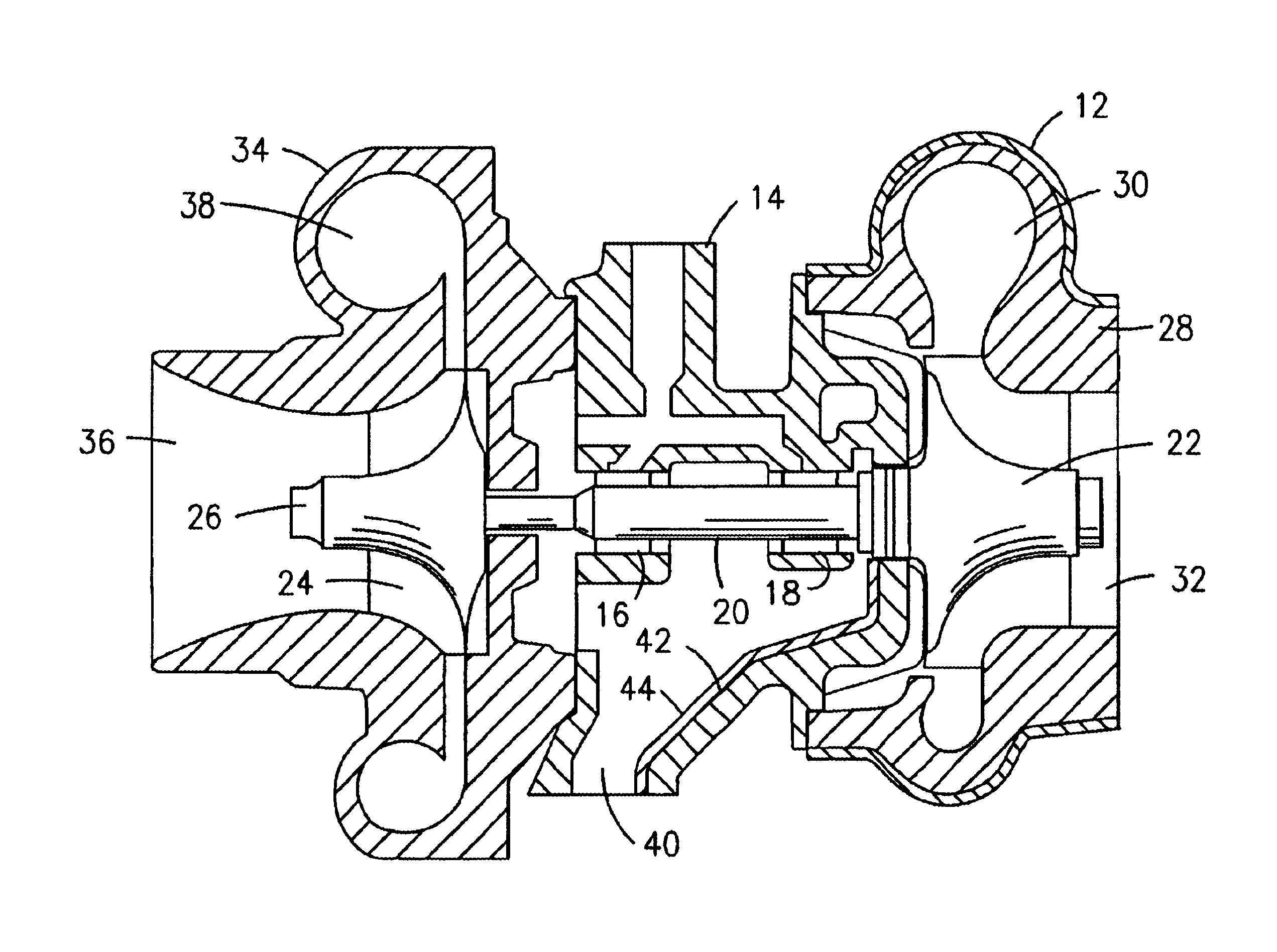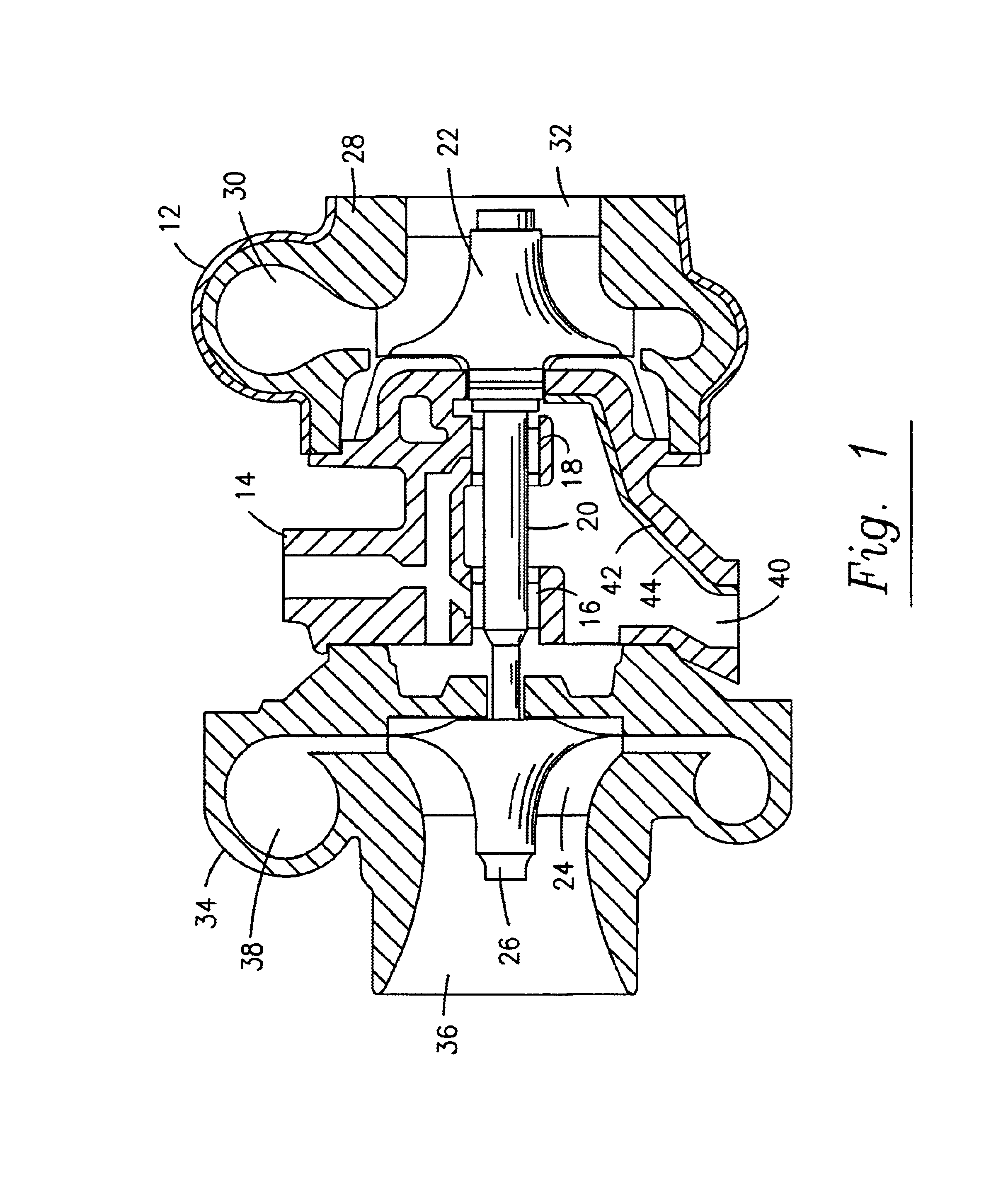Turbocharger with reduced coking
a turbocharger and coking technology, applied in the field of turbochargers, can solve problems such as inability to achieve solutions, and achieve the effect of increasing the weight or volume of the turbocharger and greatly reducing the coking
- Summary
- Abstract
- Description
- Claims
- Application Information
AI Technical Summary
Benefits of technology
Problems solved by technology
Method used
Image
Examples
Embodiment Construction
The present invention is applicable to any exhaust gas driven turbocharger, and particularly those lubricated by a lubricant liable to coking. Turbochargers being well known in the art, there is no need herein to go into detail on any specific design of any one turbocharger. The embodiment shown in FIG. 1 shall be considered representative herein of turbochargers in general.
With reference to FIG. 1, a turbocharger 10 includes a housing generally referenced with the numeral 12. Housing 12 includes a center section 14 receiving a pair of spaced apart journal bearings 16, 18, and rotatably receiving therein an elongate shaft 20. A turbine wheel 22 is attached to or integrally formed with one end of shaft 20. At the opposite end of shaft 20 a compressor wheel 24 is carried thereon and drivingly secured thereto by a nut 26 threadably engaging the shaft.
A turbine housing section 28 mates with the bearing housing section 14 and defines an exhaust gas inlet 30 leading to a radially outer po...
PUM
| Property | Measurement | Unit |
|---|---|---|
| particle size | aaaaa | aaaaa |
| melting temperature | aaaaa | aaaaa |
| heat insulating | aaaaa | aaaaa |
Abstract
Description
Claims
Application Information
 Login to View More
Login to View More - R&D
- Intellectual Property
- Life Sciences
- Materials
- Tech Scout
- Unparalleled Data Quality
- Higher Quality Content
- 60% Fewer Hallucinations
Browse by: Latest US Patents, China's latest patents, Technical Efficacy Thesaurus, Application Domain, Technology Topic, Popular Technical Reports.
© 2025 PatSnap. All rights reserved.Legal|Privacy policy|Modern Slavery Act Transparency Statement|Sitemap|About US| Contact US: help@patsnap.com


